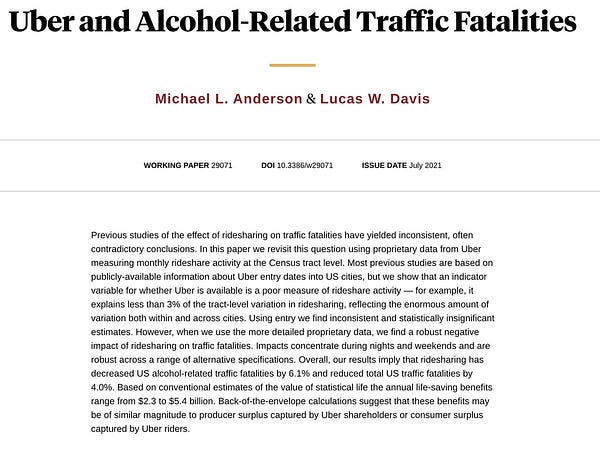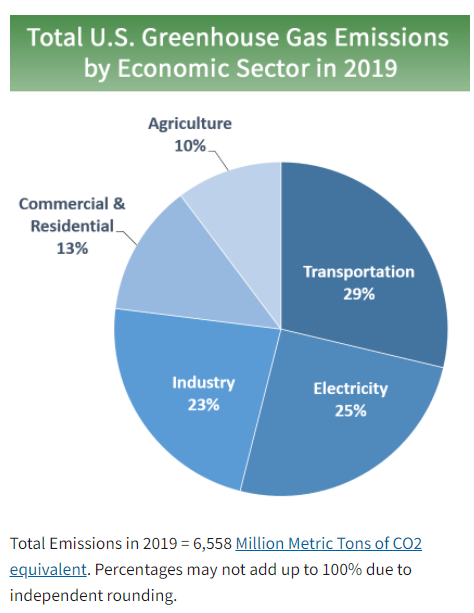CarTalk # 48 (Flying Taxis, Electric Buses)
..and other exciting mobility news worthy of discussion!
Hi friends
I’m writing this issue as I watch the opening lap of the Hungarian Formula 1 Grand Prix. It is the best TV I’ve seen all month. Spare a minute to watch if you can! Tell me if you too were reminded of Miley Cyrus’s “I came in like a wrecking ball” like I was!
Welcome to new subscribers! I write about new mobility (electric, autonomous, shared, connected) every week or so. Instead of linking every mobility related news of the week, I cherry-pick articles that I consider more signal, less noise.
I’m still figuring out Substack but am enjoying writing on the platform! Much ground to cover below.
Buckle up!
Mobility Around The US
Rivian closes $2.5 billion funding round:Rivian managed to get another big war chest, thanks to Amazon’s Climate Pledge Fund, D1 Capital Partners, Ford Motor Company. Yes, Ford too. The same Ford that canceled plans to build electric vehicles based on Rivian’s skateboard platform for its luxury brand - Lincoln Motors:
“Given the current environment, Lincoln and Rivian have decided not to pursue the development of a fully electric vehicle based on Rivian’s skateboard platform,”
I digress. This update is about Rivian, not Ford. Per Rivian’s CEO:
“This infusion of funds from trusted partners allows Rivian to scale new vehicle programs, expand our domestic facility footprint, and fuel international product rollout.”
It’s true - they are on the hunt for a new site too and will find a good use of the $2.5B:
The site will reportedly require 2,000 acres of land to one day produce EVs and battery cells for the startup carmaker. Further, the project calls for the site to flip to carbon-neutral as soon as possible.
Another update from Rivian, whereby their truck is delayed by a quarter:
The Amazon and Ford-backed EV startup originally planned to start delivering its electric pickup, the R1T, and its SUV, the R1S, in 2020. But it scuttled those plans at the beginning of the pandemic and said at the time that it would start deliveries in 2021 instead. Rivian eventually settled on starting deliveries of the R1T in June of this year, only to push that back to July, and now to September.
The delay isn’t a huge deal in my book. The pandemic has been hard and in one year, everyone will forget these delays. I expect great things from this truck. I mean, just look at it!
Mercedes Benz to go all-electric by 2025: Another day, another catchy announcement. Our friends at Mercedes have announced that they will
..shift its focus entirely to electric vehicles in 2025 and be prepared to sell nothing but electric cars by 2030
Why 2025? Why not right away? The Mercedes EQS electric S-class-like sedan is getting good reviews (although the writers of this Motortrend article couldn’t help comparing it repeatedly with a Tesla.. Just write about the car’s own merit, eh?). Mercedes also announced:
…it would invest 40 billion euros, or $47 billion, on electric cars, vans and light commercial vehicles by 2030.
Cool. If you’re playing catchup like Mercedes is, better come out swinging. For reference, similar announcements from other OEMs recently:
Stellantis will spend $35.5B on EVs (excellent Twitter thread)
Mercedes has a lofty aim, but Das Auto is bringing Das Kapital!
(New CarTalk tagline: come for the mobility, stay for the Marxism)
155 mile test flight in a flying taxi:I’m still meh on eVTOL aircrafts aka flying taxis (exhibit 1, exhibit 2, exhibit 3) but people far smarter than me are funneling money into this space, so I must talk about it. From our fine friends at McKinsey, again:
Average deal size is $245M in 2021. From the article:
Most of this funding of the past years has centered on manned advanced air mobility (AAM) solutions, with electric vertical takeoff and landing (eVTOL) air taxis and other passenger options accounting for nearly 80 percent of the total funding.
For what its worth, Joby Aviation is the creme de la creme of the flying taxi space and a large number of successful investors have a stake in Joby. Here’s what Joby did recently:
The prototype spent more than an hour and 17 minutes in the air and covered 154.6 statute miles on a single battery charge, traveling along a predefined circuit. While the test flight was remotely piloted by Joby’s chief test pilot, Justin Paines, the company plans to have pilots in the aircraft when it opens its ridesharing service for customers.
Wired: Flying 155 battery-powered miles in circles over Big Sur
Tired (for now): Remotely piloted. Also ruining Big Sur’s beauty.
Add a couple of passengers and a pilot to the flying taxi and the range drops to…?
One of the benefits of writing CarTalk for more than a year is that I can recall older announcements/articles and tie them together. This amazing, amazing article from last year aims to answer just the question I pose above. Back then, Joby’s CEO said:
..Joby has been able to design a five-seat air taxi that can travel 150 miles powered by lithium-ion battery cells that are on the road today in electric cars.
He didn’t say if this range was with or without humans. Very smart folks assumed with humans and came to this conclusion:
“If Joby’s asserting that we’ve solved the problem and can do 150 miles with five passengers on automotive batteries, then essentially everyone making new batteries for EVTOL can quit,” says Venkat Viswanathan, a battery researcher at Carnegie Mellon University who’s involved in one such effort.
Joby has kept their cards close to their chest but here are known facts:
Their S4 aircraft has a maximum gross flying weight of 4800 lbs
Battery pack energy density of 235 Wh/Kg, meaning the batteries itself weigh 1870 lbs out of the permissible 4800.
Can Joby add 4 humans (~800 lbs), the weight of the propellers, aircraft body, etc. and still keep 150 miles of range? The conclusion seems to be:
Either Joby has built an unprecedentedly light and efficient airframe, or its aircraft’s range will turn out to be lower.
We shall see. Hoping they did the unprecedented.
Also hoping they fly more inland and leave Big Sur unperturbed.
Electric Bus Bedlam:What follows below is a loosely connected yet fascinating series of vignettes in the electric bus space. Fascinating to me, anyways!
Let’s start at an easy place - a Potus tweet


Pay close attention to the very last line in brackets - thousands of electric buses! More details here, the key detail being:
Under a bipartisan agreement struck last month, $7.5 billion would flow to bus electrification programs
Makes sense to me, given transportation is the biggest sector causing greenhouse emissions in the US:
With me so far, right?
Two of the biggest electric bus manufacturers that play in the US markets are:
Proterra: Based in the Bay Area. If you’ve flown into San Jose airport, you’ve seen these buses take folks to offsite parking lots
BYD: Chinese manufacturer with an impressive US penetration. If you’ve been on tech campuses like Facebook, you’ll have seen BYD shuttles take employees from their free gyms to their free organic-food-only breakfast cafes
Back in 2019, the US decided that BYD is a persona non grata and as a result they would be restricted from enjoying the $7.5B that Biden has earmarked. Why? Because:
"China has poured more than $10 billion into the electric vehicle battery industry since 2012, equating to a subsidy of around $10,000 per electric car, and higher for electric buses" the report said.
The US thinks BYD’s buses are bankrolled by Xi himself. BYD North America claims that as a separate business unit, it does not receive direct Chinese subsidies, which are instead provided to companies doing business in China.
While BYD gets the heave-ho at the Federal level, local transit agencies love them:
"It takes the most competitive provider out of the market, which creates a collusive environment for the other remaining players to raise the price," said Macy Neshati, CEO of Antelope Valley Transit Authority, which serves the Los Angeles county area and has converted almost its entire bus fleet of around 85 buses to battery-powered BYDs.
Poor BYD.
(This is a great profile of BYD that I highly recommend reading and/or bookmarking)
Good news for Proterra then! $7.5B to play with! Except Proterra buses have been in hot water recently. Proterra is a Biden administration favorite, so it is extra juicy that this investigative report comes from National Public Radio:
It’s been nearly a year and a half since a passenger set foot inside one of SEPTA’s Proterra buses, which cost nearly a million dollars apiece when they rolled out in 2019. Most are now gathering dust in a South Philly bus depot, riven by cracked chassis and other defects.
Proterra buses are falling apart. No spare parts to fix them. It has been a sunk cost on the part of the transit agencies. They are so burned by Proterra they don’t even want to talk electrification! Total bedlam. Again, the fact that this was reported by NPR makes it extra exciting.
Here’s hoping that (1) Proterra fixes whatever ails them and (2) BYD North America gets a shot at selling electric buses to transit agencies.
EVs are hard: This isn’t a dunk. Just a reminder that EVs are hard. GM had to recall 69,000 Bolts with manufacturing defects that were risk at of fire. I’m glad they are doing the right thing here. Reminds me of this often-quoted quip by Elon:
Mobility Around The World
Germany wants to stay in the driver’s seat for autonomous vehicles:I wanted to present the readers with a contrasting case study of autonomous driving regulations between Germany and the US. In Germany, a newly passed law on autonomous driving mandates two important things:
With its requirement that autonomous vehicles be overseen by humans, the German law reflects a realization in the industry that researchers are still years away from cars that can safely allow the driver to disengage while the car does all the work.
and
The law also requires that autonomous vehicles operate in a defined space approved by the authorities, an acknowledgment that the technology is not advanced enough to work safely in areas where traffic is chaotic and unpredictable.
Very reasonable and common-sense. And yet, this approach is in total contrast with the US, where every state has its own patchy network of autonomous laws. This 20-page report captures just that - bookmark it!
Closest to my home in San Francisco, the public-private partnership between autonomous companies and government officials isn’t entirely copacetic. Says a city official:
“We don’t have a lot of insight into industry operations on city streets. None of the testing that’s occurring is really happening in partnership with the city, or in coordination,” said Angotti, adding that the city is not able to draw conclusions around how AVs might impact greenhouse gas emissions, congestion, transit, equity and other areas.
Yikes. Anyway, nicely done, Germany! We need to get our act together here in the US.
500 million Euros:This caught my eye for a number of reasons - 500 million reasons, to be honest. Three of the biggest trucking rivals in Europe (Daimler, Volvo, Traton Group) will put aside their rivalries and partner to install a pan-Europe charging network for battery operated long-haul trucks. Traton Group owns the M.A.N. and Scania brands so between the three participants, 60% of the European trucking market is covered!
Poor Iveco.
1 Billion dollars:This isn’t new mobility, it’s an old tale of greed:
According to the European Union, Volkswagen, Audi, Porsche, BMW and Mercedes-Benz parent company Daimler have been illegally colluding to restrict competition in emission cleaning for new diesel passenger cars, essentially slowing the deployment of cleaner emissions tech.
As a result of obstructing cleaner tech, these German companies have been fined $1 billion by the EU.
Here’s the part that made me shake my head - this isn’t the first time VW has been caught cheating. Netflix even made a must-watch documentary about it.
Here’s the part that made my jaw drop, however:
Volkswagen, which owns Audi and Porsche, will have to pay around $595 million, and BMW will pay $442 million. Daimler would have had to pay around $861 million, but the company is evading fines by being the whistleblower.
Snitches get…riches?
Good Reads
A primer on LIDARs: Bookmark this link if you’ve been confused by the many LIDARs out there, how they fit into the broader sensing puzzle, and how each company differs. A great reference. Link
Can Polestar design a new kind of car company?: This is a long read but can be quickly skimmed. A really solid interview of the CEO of Polestar with gems like:
We also talked a lot about what makes a car company a car company at a time when everything about cars seems up for grabs. Thomas told me he doesn’t think of Polestar as an electric car company. Instead, he sees the brand as a set of “core values” about what a car is, with the technology underneath replaceable over time — maybe a long period of time. Eventually, Thomas told me, something else will take over from EVs.
The interviewer is great at pushing back at the CEO of Polestar. Very interesting read overall.
Top Notch tweets
I learn so much from Twitter every day. My only regret is not starting on Twitter earlier and ditching LinkedIn entirely (recently a festering pile of grandiosity). I want to start highlighting the accounts I learn regularly from and what I found interesting. Here goes:
Tying back to my issue on cell chemistries (highly recommended read for new subscribers), I was glad to see that Nickel, Manganese, Cobalt based batteries have a high, positive recycling profit (since these elements are rare) relative to recycling of Lithium Iron based chemistries - a money losing proposition. I’ll keep this tweet handy.
Next up - this new research was widely circulated on Twitter. US vehicles have been growing bigger and safer for their occupants, at the expense of pedestrian casualties


This article titled “American cars are now almost as big as the tanks that won WW2” goes well with the above tweet in a gross/perverse way.
While on fatalities, I was happy to read that ride-sharing has dropped fatalities from drunk driving. Even though ride-sharing is beset with problems (biggest of them being profitability), I’ll take this win.


That’s all from me folks. Have a great week!
👇 Please hit the ❤️ button below if you enjoyed this post. Or leave a comment!











Great stuff, per usual, Sachin!